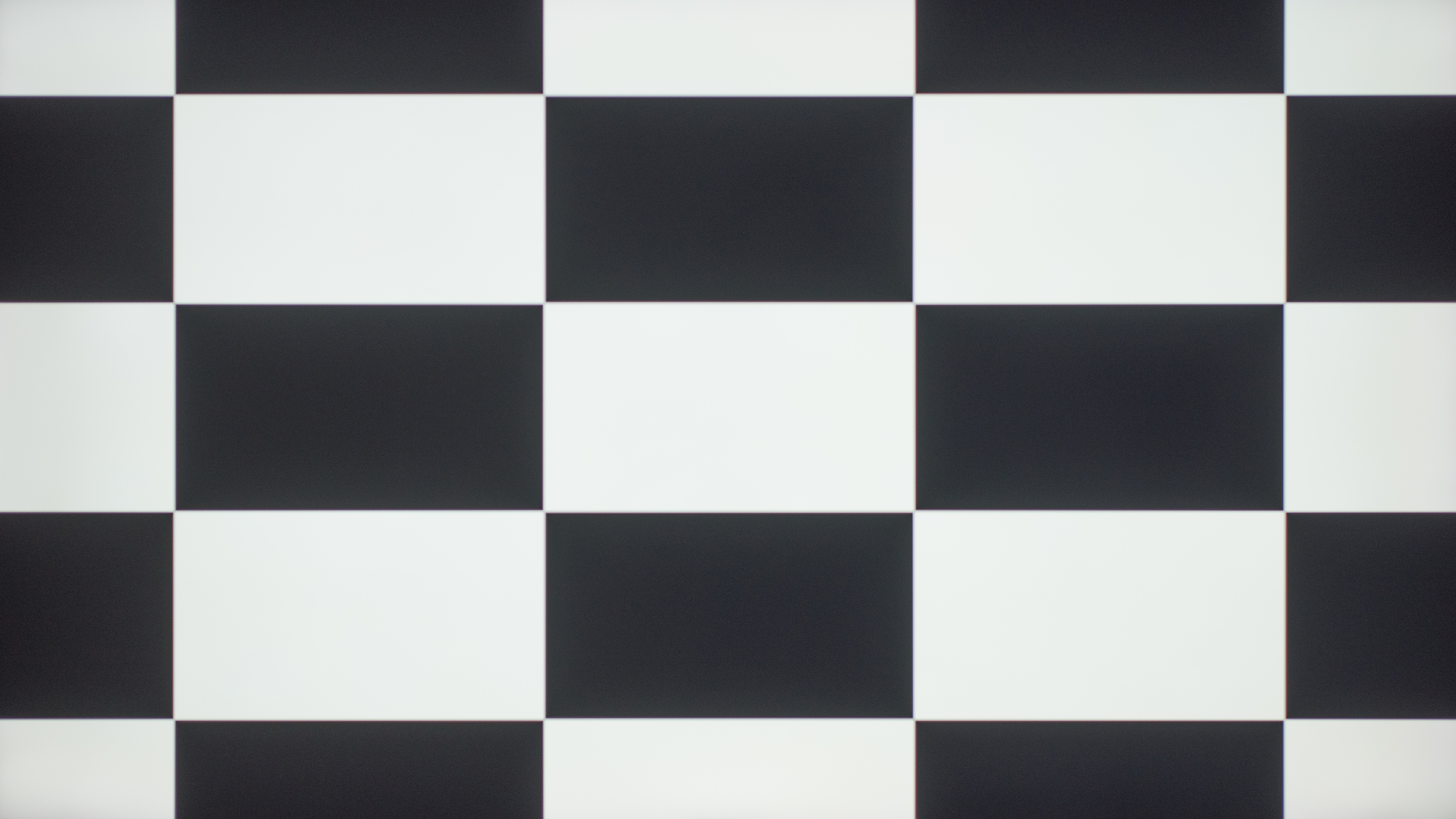- 80.0% Contrast
- 20.0% Native Contrast
The contrast ratio is the ratio between the luminance of the brightest white and the darkest black that a TV can produce. A higher contrast ratio means that the TV can display deeper blacks, improving the overall picture quality, especially when watching content in dark rooms. Certain panel technologies are better than others at having a high contrast ratio.
To test the contrast, we measure the luminance of both white and black and then calculate the ratio between the two. Luminance is a metric to measure the amount of light (or intensity) present on a surface and is expressed in cd/m2. For TVs, the brighter the light of the screen is, the higher the luminance is.
Test results
When It Matters
TVs with high contrast ratios are most noticeable in dark rooms compared to those with low contrast. If you're watching a movie at night and there's a dark scene, is the image almost as dark as the rest of the room, or does it look gray? If it looks black, then it has a high contrast ratio, but if it looks gray, it means it has a low contrast ratio. However, in bright rooms, the difference in contrast isn't as easy to tell; even TVs with low contrast will have blacks that look black when viewed in a bright room, and this is why contrast is most important for dark room viewing.
Our Tests
The way we measure contrast is fairly simple. We use a black and white checkerboard pattern to measure the luminance level of black and white squares. We calibrate the television to a white luminance of about 100 cd/m2 and measure the luminance of the center white square using a Konica Minolta LS-100 Luminance meter. Then we measure the luminance of the four surrounding black squares and calculate the average value between them.
Once we have measured the black and the white, we can calculate what the contrast ratio is. To get this number, we divide the white luminance by the black luminance. For example, the Samsung TU8000 has a white luminance of 99.53 cd/m2 and black is 0.0155 cd/m2, so the contrast is 6421:1.
Other testing methods
The checkerboard pattern is just one way of measuring contrast. There are other methods, like full-screen and half-screen slides. These can be inaccurate and may result in a higher contrast because of how unrealistic they can be. Scenes are rarely fully white or fully black. Another method that's considered accurate is the ANSI checkerboard pattern. It's similar to what we use, but the checkerboard is asymmetrical, and the luminance is measured in all 16 squares, with the average of the white and black luminance used for the contrast ratio.
Native Contrast
The native contrast measures the contrast ratio without any image processing settings enabled, like local dimming. Since it's a ratio, there's no unit for contrast. Instead, the norm is to express the number as ‘X:1,’ with ‘X’ being how many times brighter white is than black. For example, a 4000:1 contrast ratio would mean that the television emits white that is four thousand times brighter than its black. The higher the contrast ratio, the deeper the blacks, and the better the picture will look.
We take a picture of the checkerboard pattern and publish the photo as well. As you can see below, a TV with high contrast, the Samsung TU8000, displays much deeper blacks than one with low contrast, like the Sony X800H. To see their differences even more, you can see the black uniformity pictures below; the Samsung displays deep blacks, while blacks look blue on the Sony.
Contrast With Local Dimming
We then repeat the same process with local dimming enabled, if the TV has it. Local dimming is aimed at turning off backlighting zones on LED TVs, which improves the contrast, and usually only higher-end TVs have it. Not all local dimming features perform the same; local dimming on the Vizio P Series Quantum X 2020 improves the contrast from 5078:1 to 14345:1, and it actually decreases the contrast from 5356:1 to 4980:1 on the Vizio M7 Series Quantum 2020.
For most people, the native contrast ratio is more important than the contrast with local dimming, but the latter can be important if you want the blackest blacks.
Additional Information
OLED vs LED
OLED and LED TVs use different technologies to display an image. While LEDs use backlights behind an LCD panel, pixels on OLEDs emit their own light and don't need a backlight. OLEDs can turn individual pixels on and off, meaning that they display perfect blacks because the screen is completely off when there's a black scene. Since the luminance level of blacks on an OLED is 0, and you can't divide anything by 0, then the contrast ratio of OLEDs is considered infinity to one.
Learn more about the difference between OLED and LED
IPS vs VA
Between LED TVs, there are different panel types which each have their own effect on the contrast. Many TVs use Vertical Alignment (VA) panels, while others use In-Plane Switching (IPS) panels. VA panels provide a much higher contrast ratio than IPS, and this is because of the way pixels interact with each other. On either panel type, the pixels rotate to allow light through, which produces the image. However, when there's a black image, the pixels return to their regular position in an attempt to block off the light from the LED backlights. The vertical positioning of pixels in VA panels is more efficient at blocking off light, while IPS panels still let some light through, making blacks look gray.
Learn more about VA and IPS panels
How To Get The Best Results
There are a couple of settings that can improve the contrast ratio, with the most important being local dimming. However, changing each of these settings can also affect picture quality, so there's a trade-off between improving the contrast and having the best picture quality available. Also, contrast may vary between units of LED TVs a bit; this means that the unit you buy may have a slightly higher or lower contrast ratio than the one we tested, even if the model is the same.
Related Settings
- Local Dimming: Dims the backlight behind darker portions of the screen. It improves the contrast most of the time, and it's worth using if it performs well. However, it can introduce issues like blooming around bright objects in dark scenes, and when it's done poorly, it can dim the entire image.
- Contrast: The contrast setting on most TVs increases the luminosity of the brightest whites. This could improve the contrast, but most of the time, it negatively affects image quality.
- Brightness: Similar to the contrast setting, the brightness setting makes blacks darker when you decrease it. Once again, it can affect image quality, and we don't recommend using it, but it's up to you. However, some TVs may call their backlight setting 'Brightness', and this doesn't affect the contrast ratio, it just makes the entire screen brighter. If that's the case, the brightness setting to change the black level may be called 'Black Level'.
- Dynamic Contrast: Uses software to process the blacks and make them darker. Unfortunately, this removes detail from the image and may not be worth using.
- Gamma: Gamma doesn't control the depth of black level, but it does control the amount of detail you see in dark portions of an image. If you find it difficult to make out detail in dark images, consider increasing the gamma. We discuss gamma in more detail here.
- Highlight Brightening: Makes highlights in images extra bright, which affects how contrast looks. It may be worth using with HDR media, but not really useful for most videos.
Conclusion
The contrast ratio of a TV defines how well it displays blacks. The higher the contrast, the better, as it improves picture quality in dark scenes. If your TV has a low contrast ratio, blacks look gray. A high contrast ratio is most noticeable when viewing content in dark rooms, but there's less of a noticeable difference in well-lit rooms. Although there are multiple ways to test for contrast, we test for it using a checkerboard pattern, and we measure the difference in luminance between the white and black squares. Also, the TV's panel technology affects the contrast as there are panel types that produce deeper blacks than others. Overall, if you tend to watch movies in dark rooms, then the contrast ratio is important for you.





